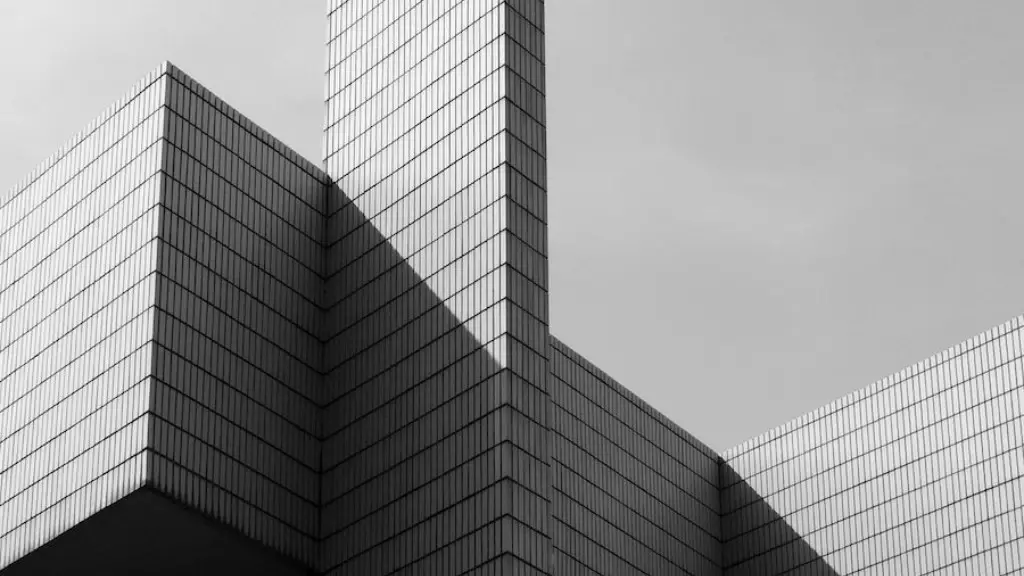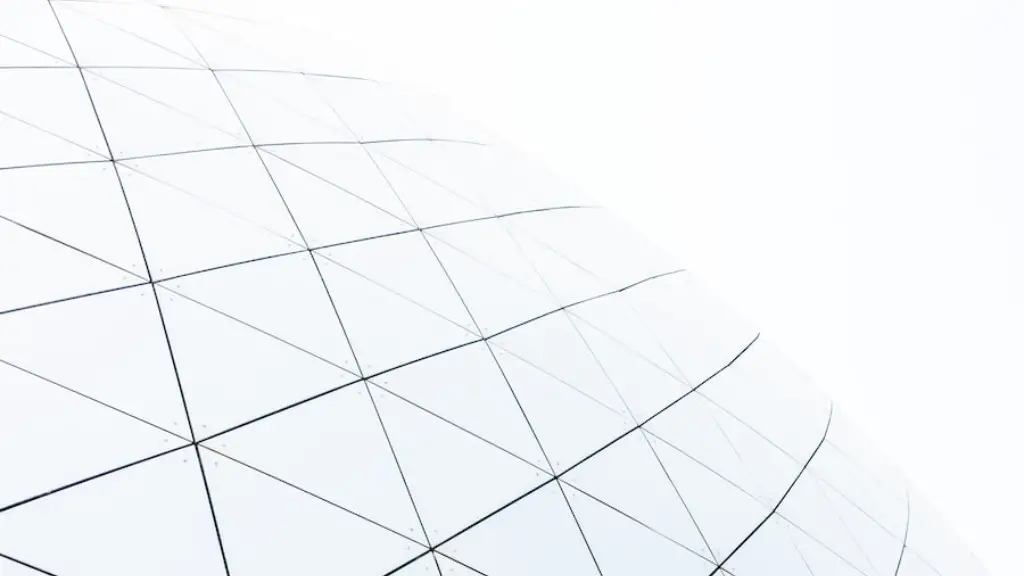De Stijl architecture is an early twentieth-century architectural movement founded in 1917 in the Netherlands by a group of young artists, architects and theorists. The group was associated with its founder, Theo van Doesburg, who was a Dutch painter and designer. The movement was inspired by elements found in the Dutch visual culture, a range of geometric shapes, primary colours, and bold forms. It is known for its minimalist approach to spaces and structures.
The movement identified three key principles of spatial applications: independent visual expression in sculpture and architecture, the combination of form and colour, and the exploration of spatial relationships to create new kinds of aesthetic experiences. These principles were used to design buildings, interiors and other structures. The aim was to create a balance between the geometrical, linear elements of Dutch culture and the more fluid forms of natural Dutch landscape, creating an architecture that focused on composition, rhythm and purity of form.
De Stijl architecture sought to create a sense of harmony and unity by emphasizing the relationships of lines and planes, creating a minimalistic aesthetic. The most famous example of De Stijl architecture is the Schroder House in Utrecht, the Netherlands, designed by Gerrit Rietveld and exhibited at the International Exhibition of Decorative Arts in Paris in 1923. The house, which has been designated a UNESCO World Heritage Site, is a landmark of De Stijl architecture, with its use of simple geometric shapes and bold primary colours.
The use of colour in De Stijl architecture is an integral element of the movement’s aesthetic. The houses and other structures often feature bright primaries, often combined with black and white. The primary colours used in De Stijl architecture represent the movement’s exploration of the relationship between form, colour and light. Colour is used to create contrast and create a sense of movement, with the geometric shapes used to play with contrast, balance, depth and shadow.
The use of colour and form also serves to create a sense of unity and harmonization of the elements. The shapes can be combined to create patterns and geometric rhythms, while the colour can be used to break up and soften the stark geometry. The combination of the two creates a harmonious and unified design.
De Stijl architecture was an influential movement that had a significant impact on the development of modernist and minimalist architecture throughout Europe. Its three key principles—independent visual expression, the combination of form and colour and the exploration of spatial relationships—have served as a major influence on the development of modern and contemporary architecture.
Design
The design principle of De Stijl aimed to create a composed image, combining flat abstract forms and clean lines. The abstract forms used in De Stijl architecture create a visual language of shapes and colours. This visual vocabulary is used to create harmony and unity between elements, as well as to create movement and depth. The shapes used in De Stijl architecture are often the same, creating a sense of repetition and rhythm, while adding visual interest and creating an atmosphere of calm.
The colour used in De Stijl architecture is often primary colours such as red, blue and yellow. Used in combination, these colours can create a bright, bold and energetic atmosphere, but also a calming and harmonious one. The primary colours used in De Stijl design can also create a sense of dynamic movement and contrast. By using the primary colours in combination with the abstract forms, the designs can be seen as dynamic, yet stable constructions.
The use of materials in De Stijl architecture is important, as it plays an integral role in creating a sense of unity. Natural materials such as wood and stone are often used, combined with the primary colours and abstract forms. This helps to create a sense of harmony and continuity between the structure and the landscape surrounding it. The De Stijl aesthetic also emphasizes the use of light, with the use of light and natural materials helping to create a sense of space and movement, which is an essential part of the design.
Influence
De Stijl architecture had a profound influence on modern and contemporary architecture. Its use of simple geometric shapes, clean lines and primary colours helped to shape the minimalist aesthetic that is now ubiquitous in contemporary architecture. The De Stijl building designs, interiors and structures influenced the development of modernist and minimalist architecture throughout Europe. Its key principles of spatial expression, combination of form and colour and exploration of spatial relationships to create aesthetic experiences have served as major foundations for architecture today.
The influence of De Stijl architecture can also be seen in contemporary design, from furniture and product design to fashion and other visual media. The geometric shapes, primary colours and minimalist aesthetic that were developed by the movement have had an influence on the design aesthetic in many areas. The influence of De Stijl on contemporary design is still evident today and can be seen in the work of many designers and architects.
Materials
The materials used in De Stijl architecture are an integral part of its aesthetic. Natural materials such as wood and stone were often used in combination with the abstract shapes and primary colours. These materials created a sense of unity and harmony between the structure and the landscape surrounding it. Natural materials such as wood and stone also helped to create a sense of light and space, helping to create a sense of movement.
The colours used in De Stijl architecture, such as the primary colours, were often combined to create a feeling of contrast and dynamic movement. This colour scheme often served to create a feeling of uniformity and harmony, which is often an essential part of the design. The combination of colours and materials helped to create a sense of unity and harmony within the design.
The use of materials in De Stijl architecture also helped to create a sense of continuity and timelessness. By using the same materials, repeating patterns and patterns of movement, the designs were able to successfully create a feeling of harmony and unity. By using the same materials in different ways, the designs were also able to create a sense of depth and space, which is an essential part of the De Stijl aesthetic.
Legacy
De Stijl architecture left a profound legacy on modern and contemporary architecture. Its minimalist aesthetic, which simultaneously combines geometrical shapes and colours, has helped to shape the architecture of today. Its design principles and use of light, materials and colours have been a major influence on contemporary architecture. Its combination of form and colour, exploration of spatial relationships and independent visual expression has also been a major influence in contemporary design, from furniture and product design to fashion and other visual media.
The legacy of De Stijl architecture can also be seen in the use of abstract forms and primary colours in many contemporary designs. This aesthetic has become so ubiquitous that it is now a part of the modern visual vocabulary. The movement’s use of simple geometric formations, clean lines and a minimalist aesthetic have had a profound impact on the way we think about design today.
De Stijl architecture was a powerful movement that changed the way that design was thought of. Its influence on modern and contemporary architecture is still evident today and can be seen in many of the designs and structures that are now a part of the modern landscape. It revolutionized the way we look at design and its aesthetic principles are still evident today.
Inovations
De Stijl architecture was an influential movement that pushed the boundaries of design and architecture. It introduced new ways of thinking about form and space, emphasising the use of geometrical forms, primary colours, and light. It also encouraged experimentation with materials and new techniques. Some notable innovations made by De Stijl architects included the invention of the folding chair, the use of reinforced concrete to create vertical structures, and new methods of creating space-saving designs.
The influence of De Stijl architecture can still be seen in the way that contemporary architecture is designed. Its principles of space, composition, and colour are still prevalent in modern and contemporary designs. This influence can be seen in the way that designers and architects use abstract forms, primary colours and clean lines to create dynamic and unified designs.
De Stijl also introduced new ways of thinking about form and space, by exploring the relationship between form and colour and by emphasising the importance of light. Its use of colour and light helped to create a sense of movement and harmony, which is an integral part of any successful design. Its approach to form and space has shaped the way that contemporary architecture is designed, with its use of simple forms, primary colours and light helping to create a sense of unity and harmony within a structure.
De Stijl architecture is an influential movement that changed the way we think about architecture and design. Its key principles of spatial expression, combination of form and colour and exploration of spatial relations have served as major foundations for modern and contemporary architecture. Its influence can still be seen in the designs and structures that are now a part of the modern landscape.





